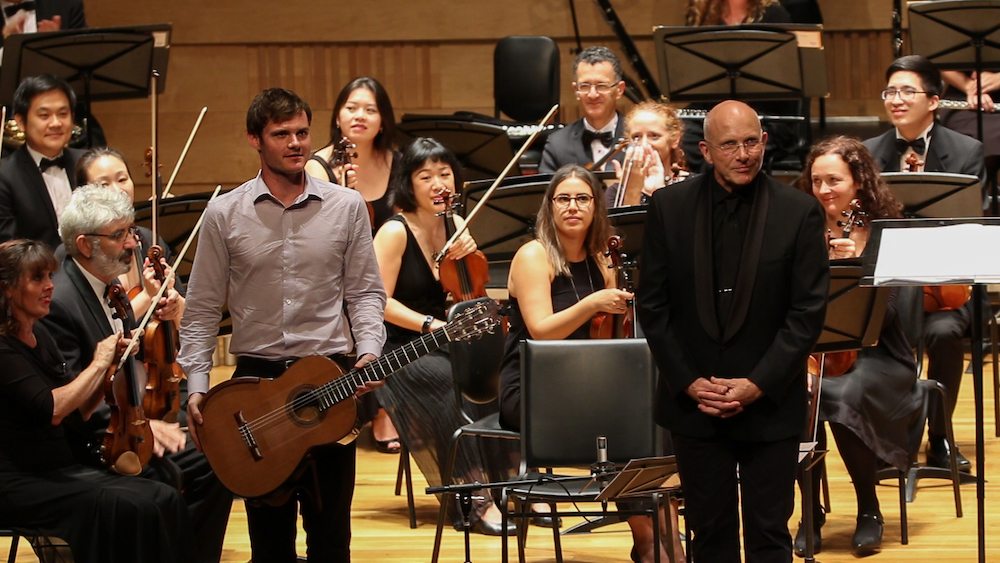Sitting in the audience at a recent Willoughby Symphony Orchestra concert, I was struck by the fact that the composer-in-residence, Nigel Westlake, was also the conductor. To have the composer of the score conduct is a very special treat indeed for musicians. Who better to provide musical insight, interpretative advice and general direction to those given the task of playing this music? It is a relatively rare combination these days.
In the past it was far from rare. In fact, from the early medieval period (400 to 1000 Common Era or Anno Domino), composers were always in residence in churches, monasteries, convents and chapels. This was how music was disseminated. Monks, nuns, priests and brothers, largely unknown and anonymous, produced masses, hymns and other works in the style known as ‘plainchant’ while residing in their respective religious abodes.
 Andrew Blanch, Nigel Westlake and the Willoughby Symphony Orchestra. Photo © Merja Media
Andrew Blanch, Nigel Westlake and the Willoughby Symphony Orchestra. Photo © Merja Media
It wasn’t until around the 10th century that we start to find composers who are actually identified. Names such as Adam de Saint Victor, Wipo, and Notker Balbulus (Balbulus meaning the...










Comments
Log in to join the conversation.